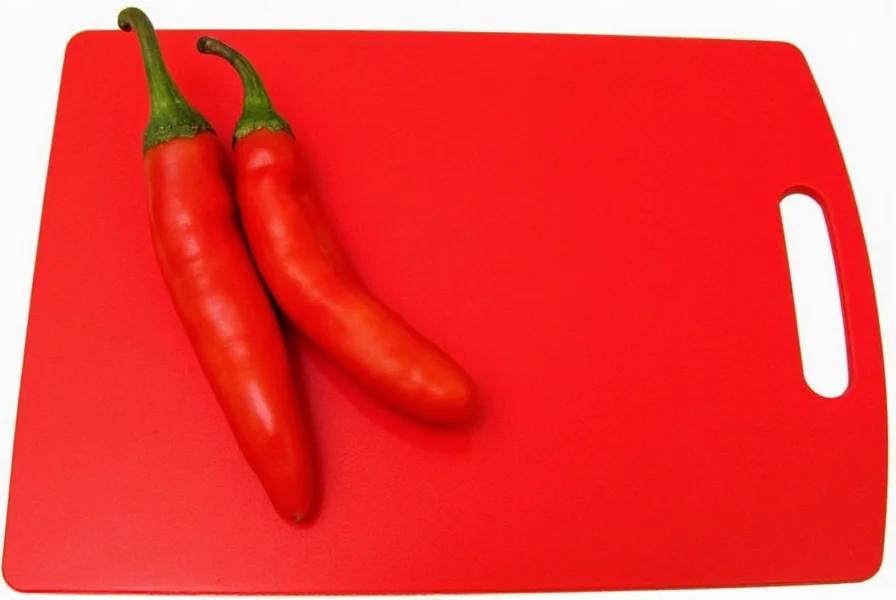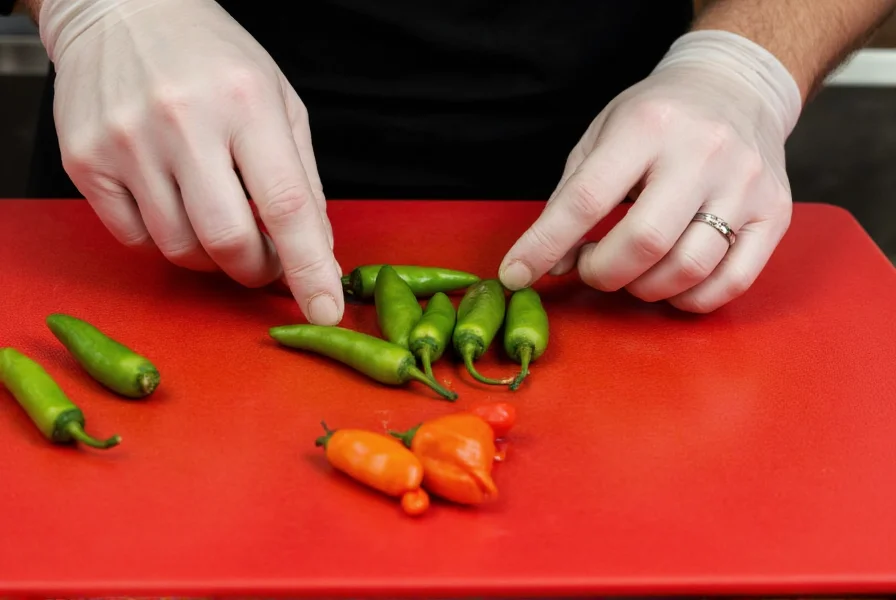When handling fiery peppers like habaneros or ghost peppers, proper kitchen tools make all the difference. A dedicated chili board isn't just convenient—it's essential for serious cooks who regularly work with spicy ingredients. This guide explains why every kitchen needs this specialized tool and how to choose the right one for your culinary needs.
Why Capsaicin Demands a Dedicated Cutting Surface
Capsaicin, the chemical compound responsible for chili heat, bonds strongly to surfaces and remains active long after cutting. Unlike acids or oils from other ingredients, capsaicin doesn't wash away easily with standard cleaning. When you use the same cutting board for mild and spicy foods, you risk transferring heat to unexpected dishes—turning a innocent salad unexpectedly fiery or causing skin irritation when handling supposedly mild ingredients.
Professional chefs and home cooks who regularly prepare spicy dishes understand that cross-contamination isn't just about flavor transfer. Residual capsaicin can cause significant discomfort when it contacts sensitive areas like eyes or lips, even hours after preparation. This is why serious chili enthusiasts maintain separate boards specifically for spicy ingredients.
Material Matters: Choosing the Right Chili Board
Not all cutting boards perform equally when handling capsaicin-rich peppers. The material's porosity directly impacts how much capsaicin gets trapped in the surface. Here's how common materials compare for dedicated chili boards:
| Material | Capsaicin Resistance | Care Requirements | Best For |
|---|---|---|---|
| Plastic | High | Dishwasher safe, frequent replacement | High-volume kitchens, commercial use |
| Bamboo | Moderate-High | Hand wash only, regular oiling | Home kitchens, eco-conscious cooks |
| Wood (Maple/Beech) | Moderate | Hand wash, frequent oiling | Traditional kitchens, occasional chili use |
| Glass/Stone | Low | Easy cleaning but damages knives | Not recommended for regular use |
Optimal Size and Design Features
Your chili board should be large enough to handle multiple peppers at once but small enough to store separately from your regular boards. Most experts recommend 12" x 18" as the ideal size for dedicated spicy pepper preparation. Look for these features when selecting the best cutting board for chili peppers:
- Distinctive color (bright red or orange) to prevent accidental mix-ups with regular boards
- Deep juice groove to contain pepper oils and seeds
- Non-slip base for safety when handling slippery peppers
- Thickness of at least 1.5 inches to prevent warping and provide stability

Maintenance Protocol for Chili Boards
Proper care extends your board's life and prevents residual heat transfer. Unlike regular cutting boards, chili boards require specific cleaning protocols:
- Immediately after use, rinse with cold water (hot water opens wood pores, trapping more capsaicin)
- Clean with vinegar solution (1:1 vinegar to water) to neutralize capsaicin
- Avoid standard dish soap which can leave residues that interact with capsaicin
- Dry vertically to prevent moisture retention in the juice groove
- Store separately in a designated container to prevent accidental contact
Plastic boards should be replaced every 6-12 months with regular chili use, as microscopic scratches eventually trap capsaicin permanently. Wooden boards require more frequent oiling with mineral oil to maintain their protective barrier against pepper oils.
Common Mistakes in Chili Preparation
Even experienced cooks make these errors when handling spicy peppers:
- Using the same knife for chili and other ingredients without thorough cleaning
- Washing hands with hot water immediately after handling chilies (spreads capsaicin)
- Storing the chili board with regular kitchen tools
- Using porous materials like soft wood that absorb capsaicin permanently
- Assuming one thorough cleaning removes all capsaicin (it doesn't)

Temporary Solutions Without a Dedicated Board
If you don't have a dedicated board for spicy peppers, these alternatives provide short-term solutions:
- Use disposable bamboo plates as single-use cutting surfaces
- Line your regular board with plastic wrap (change between different pepper varieties)
- Designate a specific section of your board exclusively for chilies
- Use glass plates (though not ideal for knife work)
These methods work in a pinch but don't match the effectiveness of a proper chili board. For regular chili preparation, investing in a dedicated board remains the safest, most practical solution for preventing unintended heat transfer and protecting your kitchen workflow.
Final Recommendations
For home cooks who prepare spicy dishes weekly, a bamboo chili board offers the best balance of performance, sustainability, and value. Commercial kitchens handling large volumes of peppers should opt for color-coded plastic boards that can withstand frequent dishwasher cycles. Regardless of material, maintaining strict separation between your chili board and other kitchen tools ensures consistent results and prevents unpleasant culinary surprises caused by accidental capsaicin transfer.
Can I use my regular cutting board for chilies if I clean it thoroughly?
While thorough cleaning helps, standard washing doesn't eliminate all capsaicin. Wood and bamboo boards develop microscopic scratches that trap pepper oils permanently. Even after cleaning, residual capsaicin can transfer to other foods. For regular chili preparation, a dedicated board is strongly recommended to prevent unexpected heat transfer and skin irritation.
How do I know if my cutting board has absorbed too much capsaicin?
Signs include persistent burning sensation when handling the board even after cleaning, visible discoloration from pepper pigments, and transferring heat to mild foods like cucumbers or lettuce. If water droplets bead up differently on certain areas, this indicates uneven absorption of oils. When these signs appear, it's time to replace your chili board.
What's the best way to clean a chili board after preparing extremely hot peppers?
Immediately rinse with cold water, then scrub with a vinegar-water solution (1:1 ratio). Avoid hot water as it opens wood pores. For plastic boards, a diluted bleach solution (1 tablespoon per quart of water) works effectively. Always dry vertically and store separately. Never use the same sponge or cloth for your chili board that you use for other kitchen surfaces.
Should I use a different knife for my chili board?
Yes, maintaining a dedicated knife for chili preparation prevents cross-contamination. Stainless steel knives work best as they don't absorb oils like carbon steel. After use, clean the knife with the same vinegar solution you use for the board, paying special attention to the handle where oils can accumulate. Store the knife separately from your regular cutlery.











 浙公网安备
33010002000092号
浙公网安备
33010002000092号 浙B2-20120091-4
浙B2-20120091-4